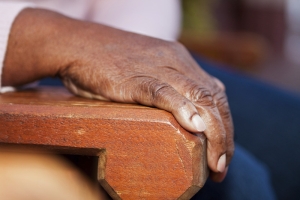USC Roybal Report Highlights Challenges for Los Angeles County’s Aging Adults
September 14, 2015 / by Vincent Lim- Research
A new report released by the USC Edward R. Roybal Institute on Aging at the USC School of Social Work found that while Angelenos overall are living longer, there are significant differences in health prospects for older adults of certain racial and ethnic backgrounds, depending on where they live in the county.
The 2015 Los Angeles Healthy Aging Report details important information about the health and overall well-being of adults age 50 or older living in Los Angeles County, with an emphasis on those in South Los Angeles, East Los Angeles and the Harbor area. One of the most comprehensive explorations of aging and quality of life ever conducted on LA’s older residents, the new study reports on health status, access to and use of health care, and social and economic factors affecting healthy aging.
“While we have made progress in fostering an environment for healthy aging in some areas, our sub-county data tells us that we’ve fallen behind in providing adequate and accessible health and wellness resources to many of our communities,” said William Vega, executive director of the USC Roybal Institute on Aging and a USC provost professor. “The findings put a spotlight on several areas where changes are needed.”
“These findings give us an opportunity to critically examine the issues confronting older Americans in Los Angeles, and to find long-term solutions to the challenges they face,” said Congresswoman Lucille Roybal-Allard (CA-40), whose district includes areas of East Los Angeles and South Los Angeles that are discussed in the report. “The Los Angeles County population will grow dramatically older in the coming decades, and the public and private sectors must be ready to meet the needs of our aging population.”
As the nation’s largest county by population, and as one of its most socioeconomically diverse, Los Angeles County is projected to become increasingly old in the very near future. By 2020, the county’s age-50-or-older population is expected to increase by 27 percent, and the population age 65 or older by 43 percent.
Key Findings
- Life expectancy increased in Los Angeles from 75.8 years in 1991 to 81.5 years in 2011, with mortality rates declining 18 percent compared to 13 percent for the nation overall. Contributing factors included significant declines in coronary heart disease (-41 percent), stroke (-36 percent), lung cancer (-20 percent), and diabetes (-14 percent).
- The worker-to-retiree ratio in Los Angeles is projected to change dramatically from 5.2 workers per retiree in 2016 to just 2.9 workers for each retiree in 2036, raising questions about the financial security of future generations. Uncertainties surrounding the long-term funding of economic safety net programs, such as Social Security and Medicare, could also exacerbate the situation.
- The study found stark differences in the number of health care workers in various regions of Los Angeles. For every 100,000 people in West Los Angeles, there are more than 1,000 physicians. However, for every 100,000 people in South Los Angeles, there are fewer than 50 physicians (see page 19, table 9).
- Life expectancy varies across Los Angeles. A 50-year-old resident in West Los Angeles will live more than five years longer than a resident in South Los Angeles (see page 20, figure 13).
Among the report’s recommendations was a call for community health needs assessments to identify duplicate resources, shortages of professionals by geographic area, and occasions where workers could address more than one health need (for example, pharmacists who could also help manage blood pressure). Researchers also recommended integrating social services into safety-net health centers to provide more of a “one-stop shop” for seniors eligible for federal assistance programs.
The Los Angeles Healthy Aging Report was conducted as part of the Los Angeles Healthy Aging Initiative—a major collaborative of researchers from USC, UCLA, and public health organizations in Los Angeles, formed to improve the lives of the county’s residents as they grow older. Data for the report was gathered from dozens of databases, and processed to provide selected comparisons with other national areas as well as specific areas within Los Angeles County.
“The data has always been there, but it took the collaboration of many partners to be able to establish a benchmark of where we are now and what is needed in the future to assure the best health outcomes for Los Angeles County’s aging population,” Vega said.
The report was supported by funding from the Southern California Clinical and Translational Science Institute.
The USC Roybal Institute on Aging builds upon USC's longstanding tradition of creating socially relevant research, innovating educational practices, influencing policy making, fostering community-university partnerships, and sharing best practices with direct service providers. Its mission is to advance research whose goal is to enhance optimal aging for persons in minority and low-income communities.
To reference the work of our faculty online, we ask that you directly quote their work where possible and attribute it to "FACULTY NAME, a professor in the USC Suzanne Dworak-Peck School of Social Work” (LINK: https://dworakpeck.usc.edu)
